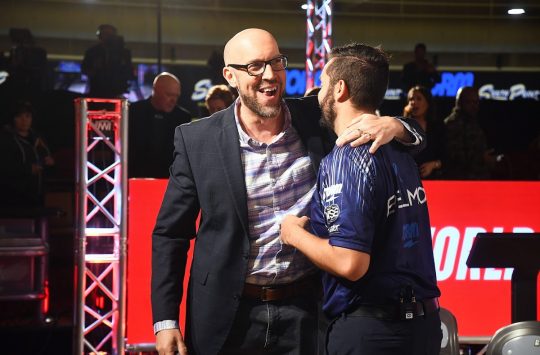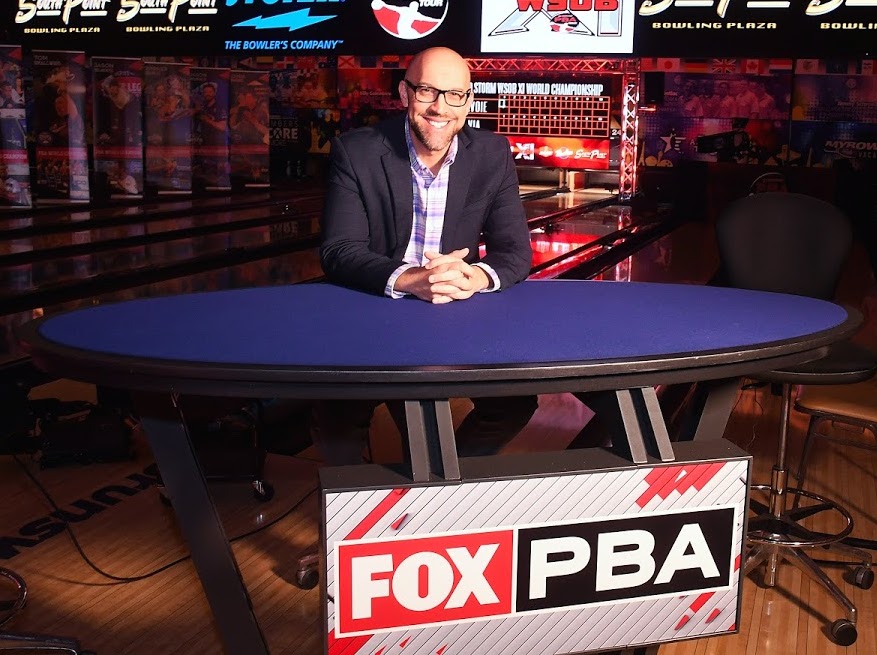Tom Clark: Pro Sports Eyeing Changes. PBA Has Been There.

BY TOM CLARK
The Big Four professional sports are searching for radical solutions to resume play amidst the COVID-19 global pandemic. Reported possibilities include the National Basketball Association moving immediately to truncated Playoffs in one city such as Las Vegas or Orlando, or Major League Baseball playing out a shortened season on Arizona fields.
We’ve heard everything is on the table, from divisional realignments to radical formats and schedules, remote fans to quarantined players. For pro sports desperate to realize media rights obligations, generate any kind of revenue or serve as a diversion for a locked-down society searching for familiar entertainment, previously unthinkable solutions are now welcome.
The Professional Bowlers Association has been there, and made it to the other side better for it.
Sometimes, with your back up against the wall, crazy ideas stick. I am not attempting to draw an equal parallel between today’s health and public safety concerns, but the PBA was threatened with its own shutdown in the wake of the Great Recession of 2008. The PBA escaped and emerged with the groundbreaking PBA World Series of Bowling.

As the saying goes, necessity is the mother of invention, and the WSOB provides an inspiring recent case study. It is one of facing down a harrowing immediate threat and executing a radical makeover as a catalyst to pivoting into a new, more prosperous future.
Since its inception in 1958, the PBA was strictly a touring sport, scheduled and formatted similarly to professional golf, with a different market and venue hosting a new field of players every week. Pro bowling’s iceberg was the debilitating economic reality in 2008. Just before the recession, smart but steep investments had the PBA on the precipice of success. With the national downturn driving advertisers away, however, operational costs were too steep a hurdle to continue as we had hoped.
We needed a plan, and we needed it quickly.
We did not wilt under this challenge. Most importantly, while re-imagining the PBA for survival, we did not simply cut expenses; we devised a plan that searched for opportunities by targeting the Tour’s weaknesses. We introduced new staging, production, and competition strategies while creating a solution. In stark contrast with tradition, the first PBA WSOB, held that summer of 2009, was a multi-tournament, multi-division competition staged solely in suburban Detroit for more than a month.
The new format delivered a diverse collection of live and taped programming for our media partner at the time, ESPN. In addressing expenses vs. revenue potential, we lowered primarily television production costs associated with travel, while delivering the same hours of original programming and relative prize money. The economic efficiencies did not stop with corporate expenses. Our players, all essentially independent contractors, were able to mitigate their expenses by taking up temporary residence in Michigan.
The WSOB also addressed three elements of our strategic plan: International expansion, pay-per-view live streaming as a revenue source, and increasing the value of our television productions.
Departing from “the way it had always been” came with vocal critics and some admitted downsides. Namely, competitive balance was threatened by utilizing just one venue. Also, it meant more taped programming, which could sacrifice viewership numbers.
Anticipating those concerns, we delivered solutions with staying power. To make taped TV more palatable, we presented one WSOB event as a documentary that became one of the most talked-about shows in PBA history. To mitigate the competitive balance issue, a different lane condition was used for every event, and players in the WSOB main event -- the World Championship -- were on a different oil pattern each day. Today in the sport, similar use of cumulative scores achieved on different conditions each day on the same lanes has become common. Yes, there was desperation, but we were courageous enough to upend normalcy, creative enough to make it iconic.
The PBA WSOB is in its 11th year, having traveled to Las Vegas and Reno for runs and back to Detroit for its 10th anniversary last year. It delivers the strongest host bids and most fans traveling to any event on the Tour. Today, there is more live TV coverage and rights fees for the PBA Tour (on FOX Sports platforms and CBS Sports Network) and more broadcast network TV exposure (on FOX), than at any time in more than two decades.
The PBA sold its digital rights largely due to the strength of the WSOB’s compelling daily content, and has increased live streaming coverage (with new partner FloSports). In 2019, our first year with new media partner FOX Sports, PBA WSOB X delivered an unprecedented five consecutive days of live, prime-time coverage of bowling on FS1, with a cumulative audience of more than five million.

On FloSports, the FloBowling channel generated the largest audiences for live-streamed bowling ever during the WSOB X match play rounds. The more traditional PBA Tour to more than 20 cities has resumed, which has attracted a TV audience of more than 20 million in 2019, generated 1,000 hours of live streaming content, and made the WSOB the focal point of the season. Other new events, such as the PBA Summer Swing, also incorporated the same, once-radical principles of the WSOB.
The lesson? Some things are temporarily lost, so that they have the opportunity to come back stronger.
Another game-changing benefit was this: The first 50 years of the PBA saw only three international players of note. The WSOB's more inviting format has allowed global participation; hundreds of players from nearly 30 countries have become members of the PBA.
In the past 10 years, a startling number of PBA champions from all corners of the globe have multiplied rapidly. On March 15, the WSOB XI PBA World Championship was one of the last live sporting events on national TV before the COVID-19 shutdown. Fittingly, Australian Jason Belmonte won his record 13th major title in Las Vegas on FS1.
Belmonte had one PBA title and no majors before the first WSOB in 2009. Today, the five-time PBA Player of the Year has 24 titles and kids all over the world emulating his revolutionary two-handed bowling style as they fall in love with the sport.
For the PBA moving forward during this pandemic, in order to provide fans action and players opportunities, we may look to bowling's own history for inspiration. Before the PBA was formed, bowlers were TV stars during the advent of the medium, participating in weekly one-on-one challenge matches or "Make That Spare" game-show-type presentations.
Bowling is uniquely positioned and flexible enough to bring top talent and compelling competition to large audiences on TV, despite today’s safety concerns. Bowling can reduce itself to one pair of lanes, with just two players keeping distance and a small TV production team bringing audiences the action. Limiting spectators is not a huge concern given the fact that pro bowling has never relied on gate as a primary funding mechanism.
Other sports are now being challenged in those areas. Draconian solutions can be scary. But as the PBA WSOB attests, the call to action can result in something even more beautiful.
(Tom Clark is the Commissioner of the Professional Bowlers Association. He has been with the PBA since 2008).
To subscribe to Bowlers Journal International now for much more of the industry's best coverage of bowling news and incisive instructional tips and analysis, go here: /bowlers-journal-subscriptions/





